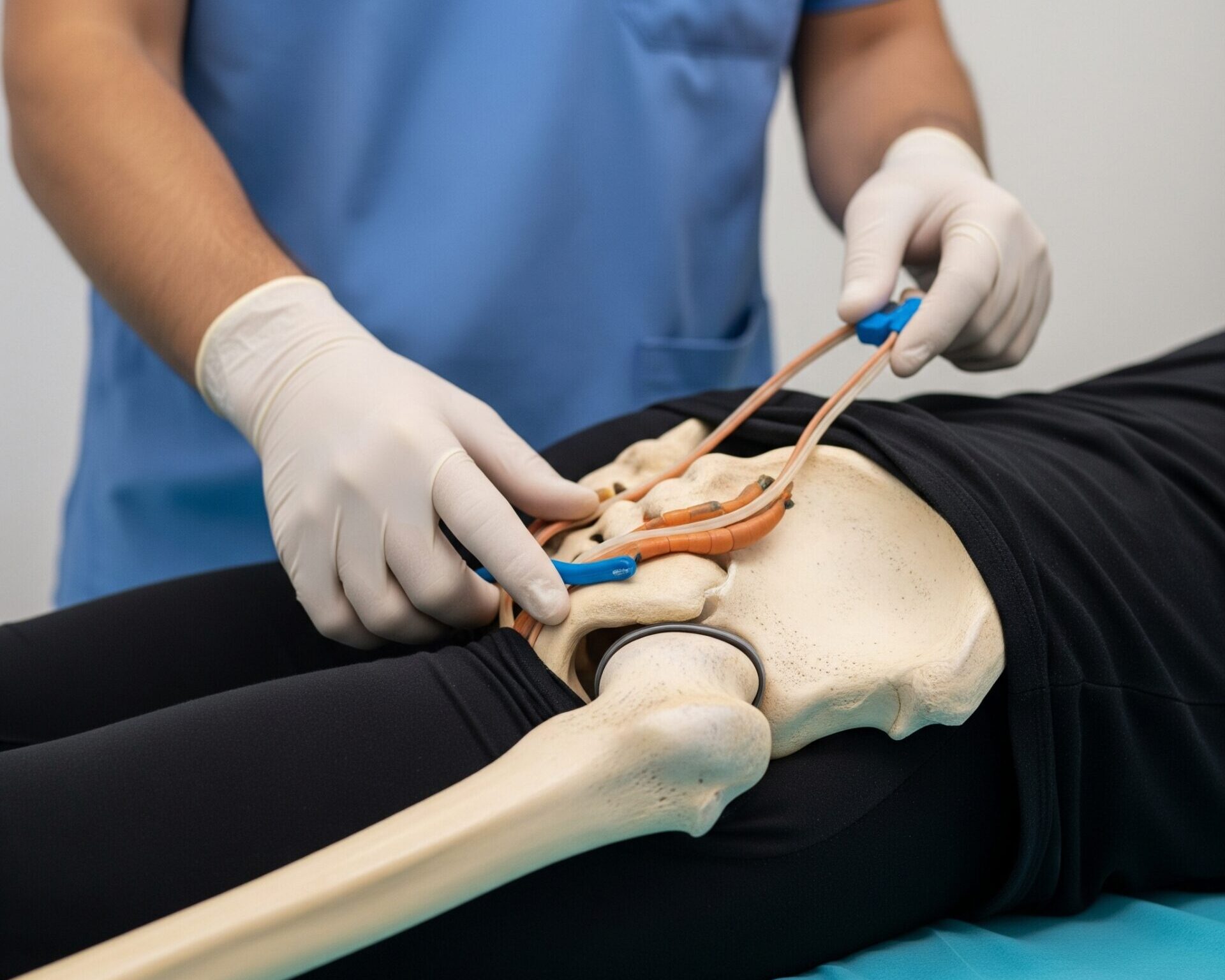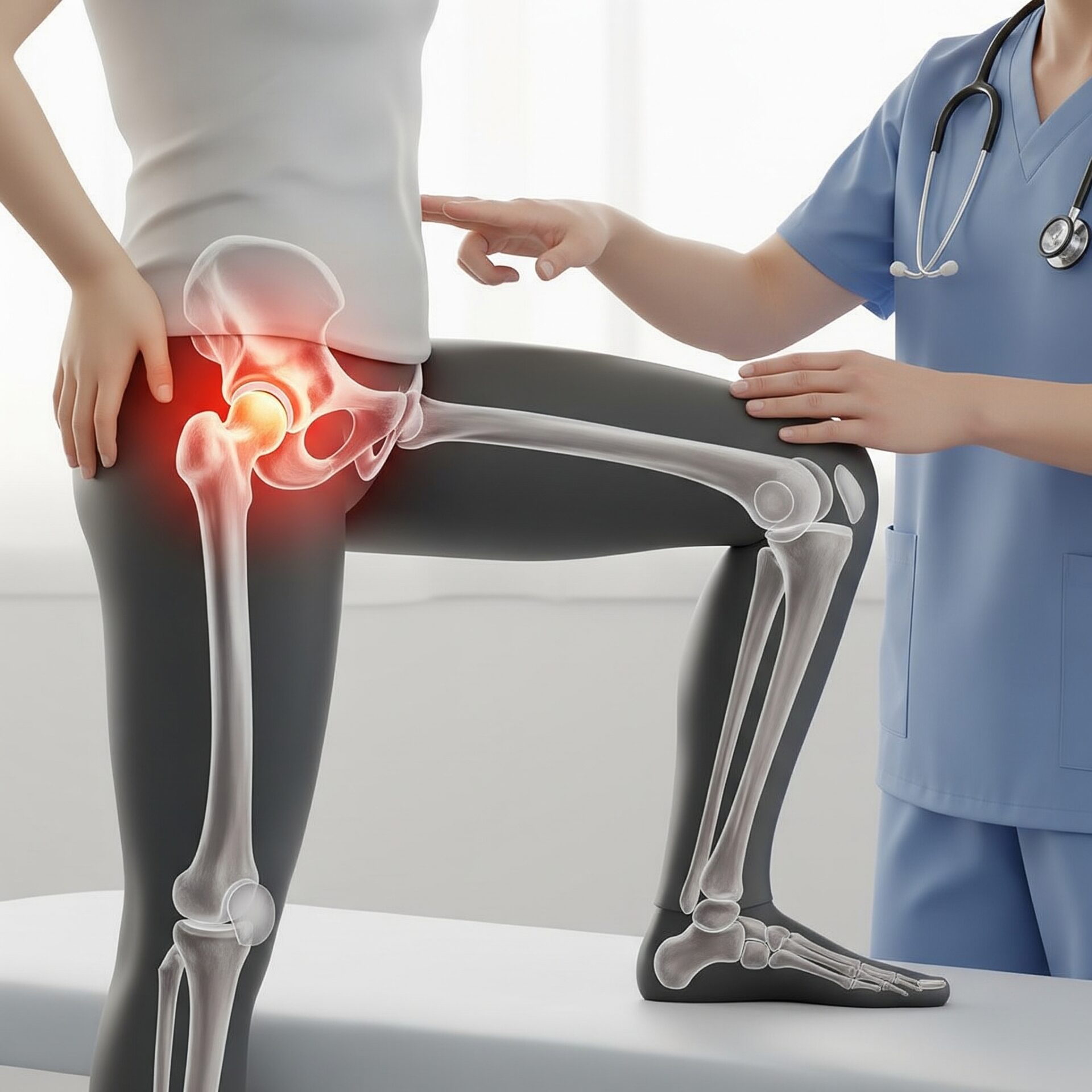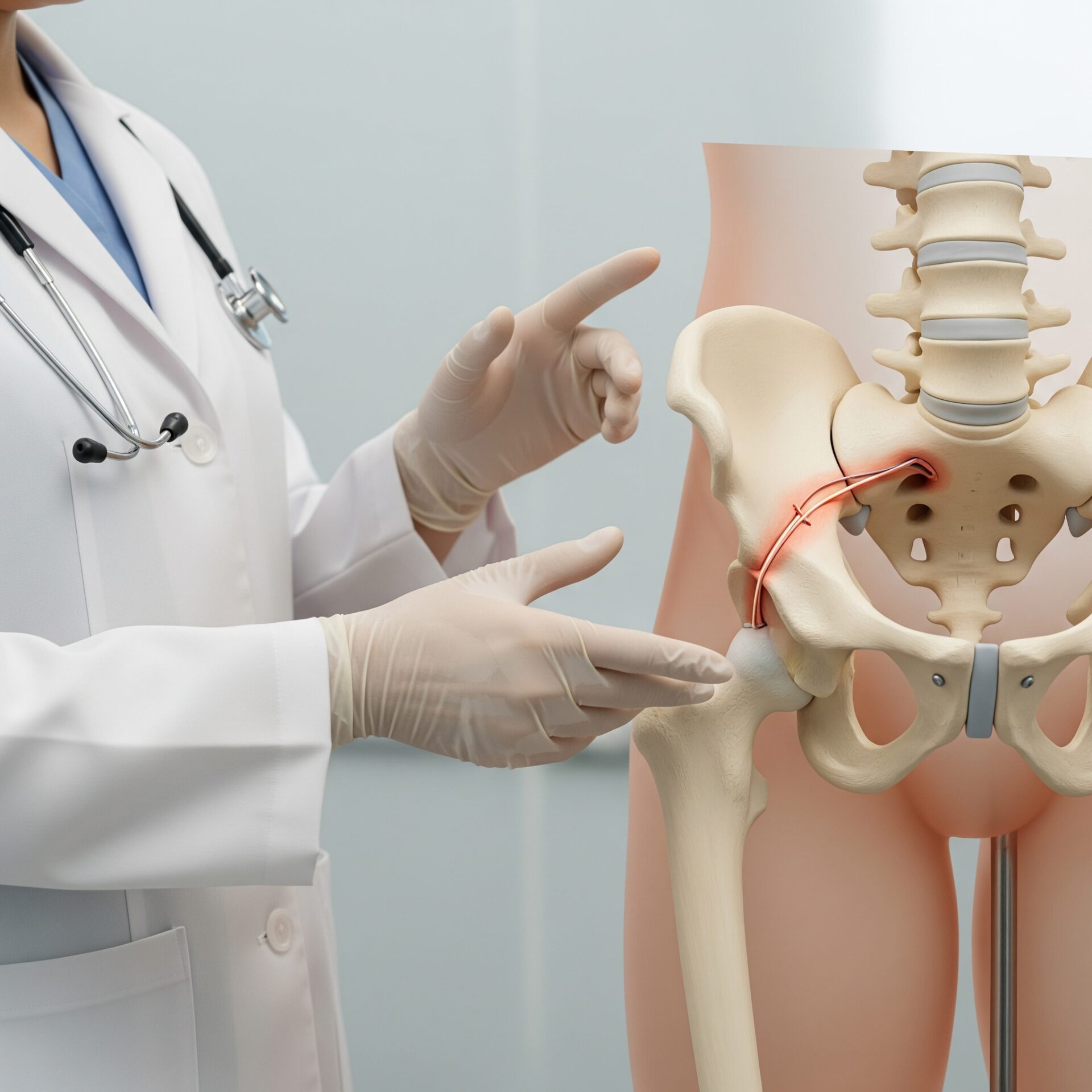Pain on the outer side of the hip — particularly when lying on it, walking, or climbing stairs — is often due to gluteal tendon injuries or inflammation near the greater trochanter.
Dr. Samuel Duff offers advanced non-surgical and surgical treatment for gluteal tendon tears across Perth and Western Australia, helping patients return to pain-free mobility.


The greater trochanter is a bony prominence on the side of the hip where the gluteus medius and gluteus minimustendons insert.
These muscles help stabilise the pelvis during walking. A swollen bursa often contributes to pain, especially in patients with weakened or torn tendons.
Common symptoms include:
Proper imaging is essential. The typical approach includes:
MRI is the preferred scan for confirming the presence and extent of gluteal tendon damage.
If there is no major tendon tear:
Correcting poor muscle activation reduces strain on the tendon and helps calm inflammation.
Surgery is usually considered when:
The surgical procedure typically includes:
Healing after gluteal tendon surgery takes time:
This recovery is similar to rotator cuff repair in the shoulder, but the hip can’t be rested in a sling, which makes guided physiotherapy even more important.

Patients often seek surgery after exhausting non-operative options, and most report:
Risks include:
Dr. Duff provides care through both private and public hospital networks in Perth and regional WA, ensuring follow-up and continuity of care across the state.
If you’re experiencing persistent hip pain on the outside of your hip or weakness while walking or standing, gluteal tendon injury may be the cause.
Dr. Samuel Duff offers advanced diagnosis and both surgical and non-surgical care options.